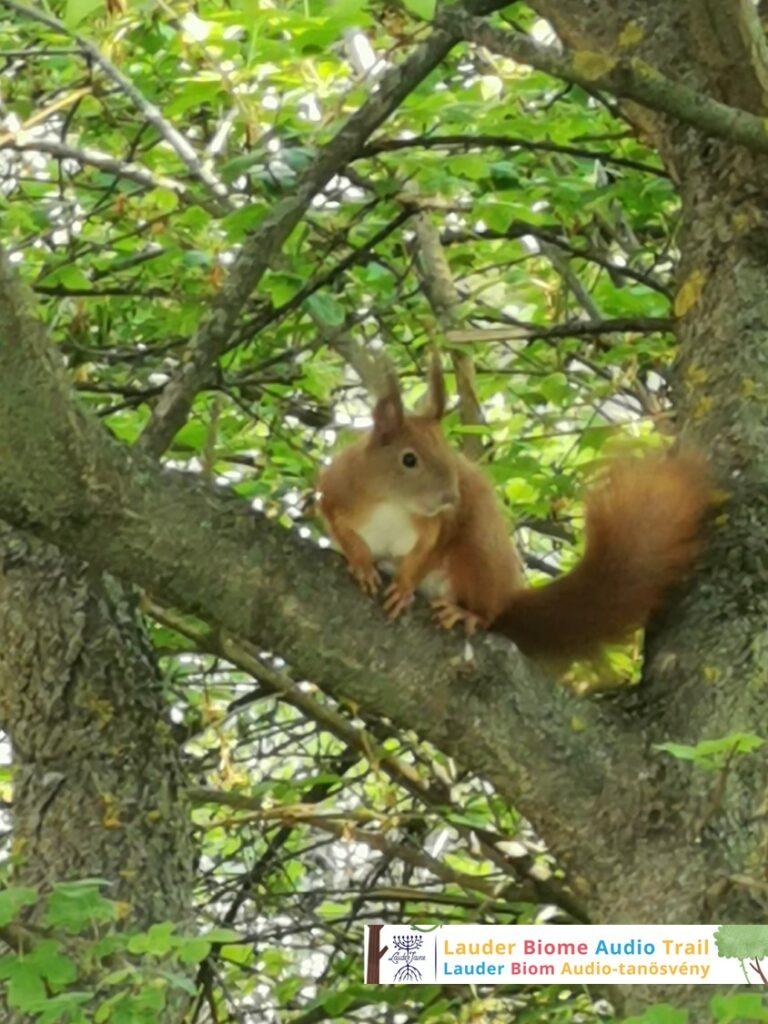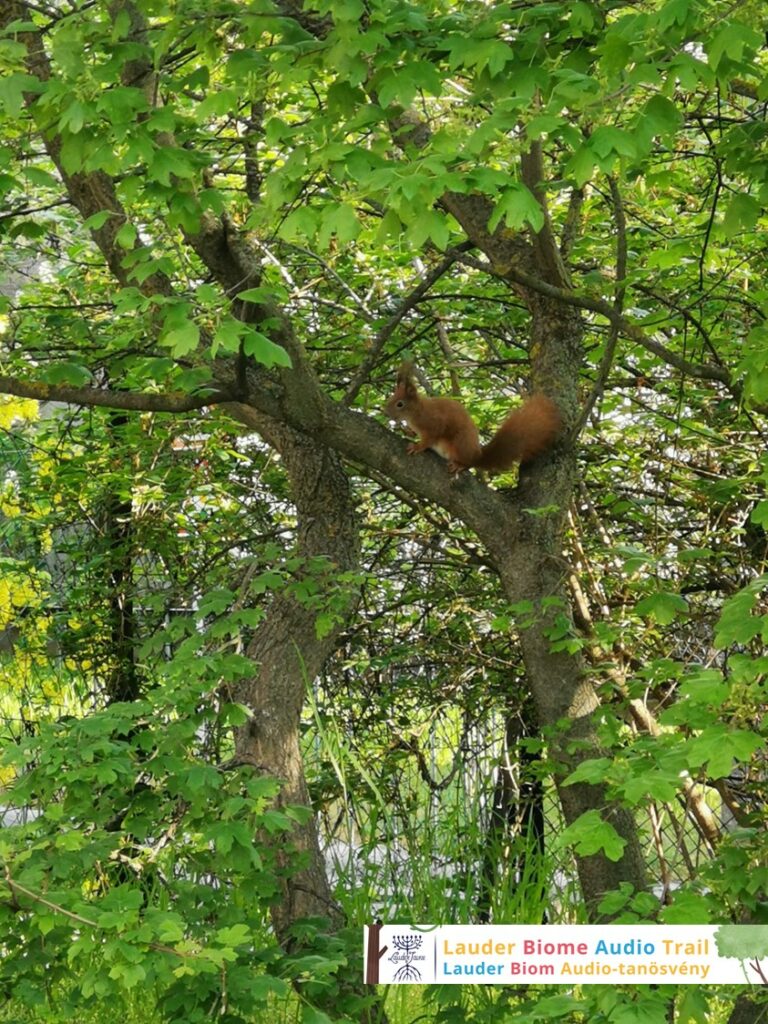
11. European Red squirrel / Sciurus vulgaris
While you’re walking along this trail you might want to look up, since you could spot a European red squirrel (Sciurus vulgaris) climbing around on the trees. This squirrel is native in Northern Asia and Northeast Europe, it is found across the dense forests and plains.The European squirrel has a head-trunk length of 21-30 centimeters, a tail length of 15-25 centimeters, and a body weight of 250-500 grams, depending on the season. The summer fur is much shorter than the winter fur, since they need more heat when it’s cold. The lifespan of this small fellow is 2-3 years. It jumps around 4-5 meters while on trees and around 50 centimeters on the ground. They become mature at the age of 11 months old, mating season is usually between December and early July. Pregnancy lasts 38 days, at the end of which the female gives birth to 1-6, mostly 4-5 offspring. They usually devour more than 100 pine cone seeds a day.
Back to the menu of the learning path

11. Európai vörös mókus / Sciurus vulgaris
Miközben ezen az ösvényen sétálsz, érdemes felnézni, mert megpillanthatsz egy európai vörös mókust (Sciurus vulgaris), amint a fákon ugrál. Ez a mókus Észak-Ázsiában és Észak Kelet-Európában őshonos, sűrű erdőkben és síkságokon fordul elő. Az európai mókus testhossza 21-30 centiméter, farka 15-25 centiméter, míg a testsúlya évszaktól függően 250-500 gramm. A nyári szőrme sokkal rövidebb, mint a téli, mivel hidegben több hőre van szükségük. Ennek a kis fickónak az élettartama 2-3 év. Körülbelül 4-5 métert ugrik fáról fára, a földön pedig 50 centiméteres ugrásokkal közlekedik. 11 hónapos korban válnak ivaréretté, a párzási időszak általában december és július eleje között van. A vemhesség 38 napig tart, ennek végén a nőstény 1-6, többnyire 4-5 utódnak ad életet. Általában több mint 100 fenyőtobozt falnak fel naponta.
